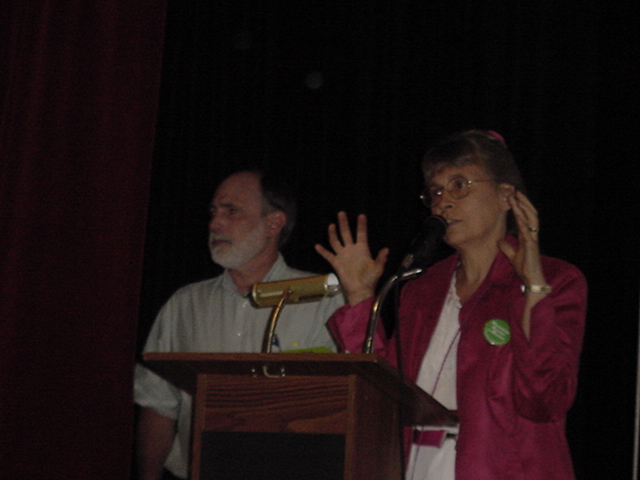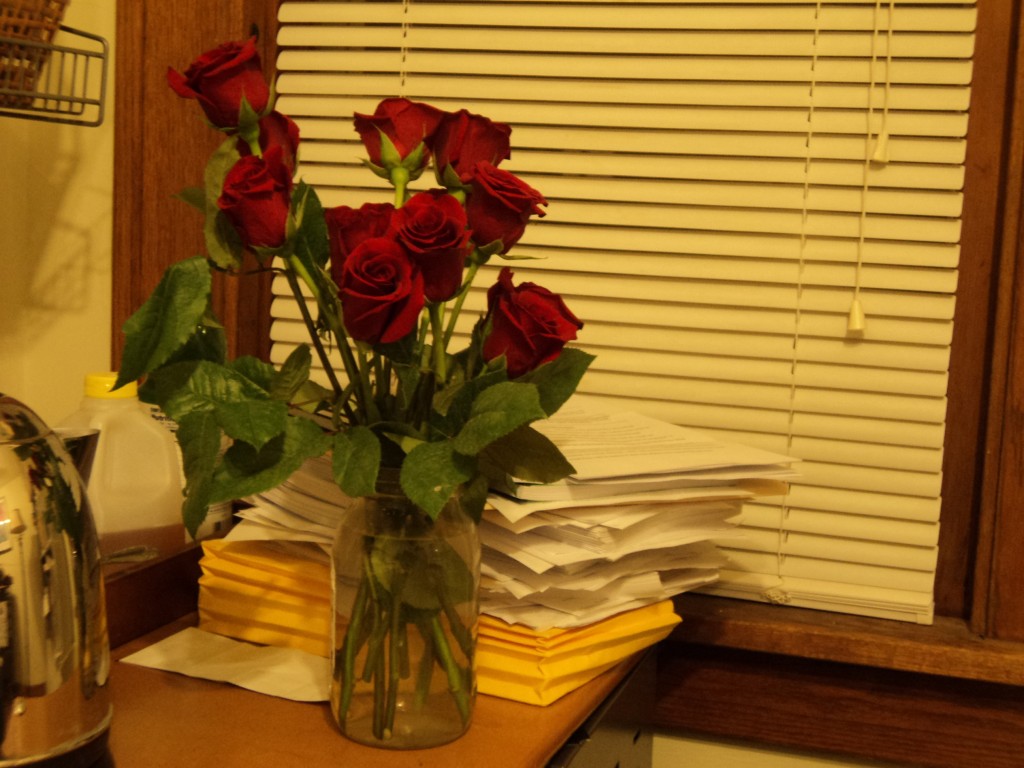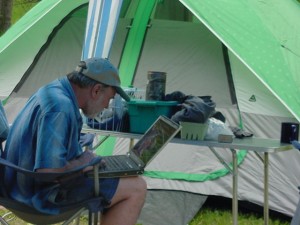Uprate for Prairie Island Nuclear Plant?
May 30th, 2012
 (that’s dear departed Kenya doggy in front of the Prairie Island Nuclear Generating Plant back in 2004 or so)
(that’s dear departed Kenya doggy in front of the Prairie Island Nuclear Generating Plant back in 2004 or so)
Uprate Xcel Energy’s Prairie Island Nuclear Generating Plant? I think not…
Today was the deadline for filing comments to Xcel Energy’s Changed Circumstances Petition. Here it is:
And what’s been filed so far:
City of Red Wing (misses the boat, doesn’t address need, only $$$)
Prairie Island Indian Community – BULLS EYE!!! Very well done!
And Alan and I filed joint Comments:
HERC Burner info on KFAI
February 27th, 2012
Today at 9:00 a.m. , Alan Muller is going to be on Andy Driscoll’s Truth to Tell on KFAI, together with Rep. Frank Hornstein, Rep. Karen Clark, and Lara Norkus-Crampton, RN.
Listen here:
Listen Now
- MP3:
- 256k
For more information generally, see Neighbors Against the Burner, and look for HERC.
Here’s from Andy’s Truth To Tell site:
Should Hennepin County garbage burner operator Covanta Energy be allowed to increase its burning volume by almost 20%?
State and city permits currently allow Hennepin County and Covanta to incinerate 1,000 tons of Minneapolis and near-ring suburban garbage at the HERC (Hennepin Energy Resource Center) facility in the heart of downtown (in Target Field’s backyard, so to speak). Covanta and the county want to up that by 212 tons per day, the maximum the plant could handle.
Here’s what Hennepin County’s HERC page proclaims (boldface ours):
About 365,000 tons of garbage (1,000 per day) is burned at HERC to provide enough electricity for 25,000 homes each year. Electricity generated at HERC is sold to Xcel Energy. (Covanta labels the 33.7 megawatts they sell to Xcel Energy as “renewable”.)
Through the steam line, HERC provides enough steam for the annual natural gas needs of 1,500 homes to buildings in downtown Minneapolis and Target Field.
Residents and businesses in Hennepin County generate 1 million tons of garbage every year. Processing waste at HERC is an environmentally preferable alternative to landfilling waste.
More than 11,000 tons of ferrous metal are recovered every year at HERC and recycled.
Processing one ton of waste at HERC prevents the release of one ton of greenhouse gas emissions. Since HERC opened in 1990, processing waste has prevented the release of 3 million tons of carbon dioxide emissions.
Is burning garbage really the best way to a) manage our waste without landfilling it? and/or b) generate electricity or other forms of energy? Whatever happened to the recycling, composting and reducing waste targets developed years ago now? Is this WTE – waste-to-energy – system the healthiest alternative?
Burned materials of all kinds pour pollutants into the air we breathe – and choke on, creating unprecedented percentages of respiratory problems in children and adults, especially adults with chronic health problems.
Lead, cadmium and other heavy metals are released into the air over Minneapolis and blow in different directions at different times of the year, settling in the systems of residents all around the Twin Cities. Remember, this is added to other burning and pollutants from other sources, including energy and manufacturing companies dotting the Metro.
Even with all the money generated for Hennepin County by this burning operation, can the health protection mandate of the county and the state justify such data as an 11.4% rate of children’s asthma in Minneapolis or 9.2% county-wide?
Two years ago, the Minneapolis Planning Commission bucked its own staff’s recommendation and turned down Covanta’s and Hennepin’s request for changing the city’s conditional use permit to allow for the increased burning. Covanta started to appeal that decision to the City Council, but could see the media coverage and count the votes on the City Council Zoning and Planning Committee and pulled it back to consult with the Pollution Control Agency about modifying THAT permit to burn.
Their appeal was coming up again in Minneapolis this month – now they’ve asked for another extension for that – to October. Anti-burning advocates and other environmentalists are pressing hard to keep any more garbage from being burnt there, insisting that all burning, not just the increase, is killing people. (Watch an interview between guests Lara Norkus-Crampton and Rep. Frank Hornstein.)
256k
It’s that time of year again…
February 13th, 2012
Alan Muller featured in Delaware Today
September 19th, 2011
Alan Muller ‘s office in Lake Itasca Park
And at a Rock-Tenn Burner Fest in St. Paul, being introduced by Nancy Hone, Neighbors Against the Burner:

Here’s a profile of Alan that was published in Delaware Today:
Alan Muller takes no prisoners.
His wrath spares few of those in power. Here’s a sampling:
Of the State Chamber of Commerce: “Probably the biggest single foe of the environment in the state.”
His scorched-earth style can elicit bitter backlash. Says John Taylor, senior vice president of the State Chamber of Commerce: “Alan Muller is great at name-calling but lousy on getting his facts right. Mr. Muller attacks anyone who doesn’t agree with him 100 percent. And his narrow, misguided and misanthropic vision is well-known to those in Delaware who truly care for the environment. In fact, the Delaware State Chamber of Commerce has been an active partner in bringing clean energy to Delaware. The latest example of this being the Bloom Energy decision to come to Newark.” While Taylor no doubt expresses what many would like to, other Muller targets chose a more circumspect response. Markell, who gets high marks from many enviros, would say only, “Alan Muller believes strongly in his causes and makes himself heard.” Chris Coons’ office declined to comment. Another Muller target, Debbie Heaton, of the Sierra Club and The Nature Conservancy, says merely that she does not have “happy memories” of working with him.
The official response to Muller is often to ignore or avoid him. That’s understandable, according to John Flaherty, another well-known Delaware activist. “Power hates and marginalizes people who are right, like Alan, because they reveal that the powerful use their positions for themselves and for the interests they serve. And once someone has been banished to the margins, the powerful can rely on the conditioned habits of the public. After all, don’t we all know that anyone on the margins is, by definition, unacceptable?”
According to Muller and some of his supporters, he’s been mistreated and harassed over the years—especially by New Castle County government, which has cited him for many violations at his Port Penn home, a historic building he purchased for about $15,000 (supplemented by a state grant) with the agreement to upgrade it. Muller says the price of the house and its central location between Wilmington and Dover cancels out environmental considerations like the three nearby nuclear reactors, the Delaware City Refinery and other major polluters.
In 2001 Baker had him arrested for “graffiti” and “criminal mischief” after Muller posted warning signs on an open channel carrying raw sewage through a Brandywine Park picnic area. In 2005 he and John Kowalko, then director of the ACORN utility campaign, now a state representative, were ejected from Legislative Hall during a House Energy Committee hearing. When they weren’t allowed to speak, Muller and Kowalko tied gags to their mouths. That incensed then-Rep. Robert Valihura, chairman of the committee, who ordered Capitol Police to remove them.
Calling it “death by a thousand cuts,” Muller says “harassment in the past few years has been relentless.”
Meanwhile, he laments the “plantation mentality” that pervades the state—“the reluctance of people to say anything challenging or critical,” including the media and other environmental organizations. The latter, he says, have been bought off or bullied into submission by those in power. “Other states are less hostile,” he says.
As a result, the somewhat rumpled 61-year-old, nursing “aching feet and a creaky back,” may leave Delaware, perhaps for Minnesota, where his soul mate, Carol Overland, is an energy consultant and lawyer. He spends about half of each year working for environmental groups in several states, at fees exceeding the small income he takes from Green Delaware.
As the most prominent activist in the state’s recent past contemplates taking his leave, it seems an appropriate time to examine his legacy—and his motivation.
For someone so passionate about it, Muller came relatively late to the environmental movement. But the seed was planted early. He grew up in Welshire, a North Wilmington suburb, living with his parents and a brother, who was a year younger. His father, Joseph, was a DuPont manager.
“I’m not saying my father was a bad guy,” Muller says, “but he reflected the values of the chemical industry at the time, and his proudest achievement was bollixing up an EPA effort to regulate sulfuric acid plants. He and other DuPonters went to Washington in the ’60s and testified that (regulation) was unreasonable, impossible and too expensive. As a kid, I thought about it and decided I kind of didn’t agree. I remember thinking the EPA could have gotten the technical details wrong, but it was hard to disagree with the concept of reducing pollution.”
(Of his relationship with his late parents, Muller says: “It had its ups and downs. I’d think my activism was part of it. They would have liked a picket-fence Republican son and grandkids.” Married once, briefly, Muller has no children.)
Fast-forward several years. Muller drops out of UD after his junior year (eventually earning a social sciences degree), goes on to several jobs, then finds himself working as a consultant for, ready? DuPont!
As a technical writer for the company’s engineering department, he says he worked with people who were involved in environmental cleanup and who also lobbied against stricter regulations. “I began to see how it worked from the inside. After several years of pumping out this rhetoric about ‘clean and green’ and don’t regulate us because we do the right things, when Reagan came in, all the company’s pro-environment rhetoric basically stopped, because they felt, ‘Now our guy is in charge.’”
While acknowledging that DuPont paid and treated him well, Muller says, “I began to not like the way they spent so much energy on bullshit and propaganda and suborning the regulatory process rather than just knuckling down and fixing the problems. I didn’t like being involved in that.”
And so an environmental advocate with the passion of a convert was born.
Casting about among the state’s enviro groups, he chose the Sierra Club, where he became conservation chairman. Soon his blunt style and disagreements with some club policies and members got him kicked out—via registered letter.
So, in 1995, he formed Green Delaware, recruiting longtime activists Jake Kreshtool, Ted Keller and Frieda Berryhill. Essentially a virtual organization with an email list of about 3,000 and fueled by Muller’s data-filled, aggressive newsletters, it quickly became the state’s most active—or at least most annoying—environmental group, and he gained a reputation for fact-based arguments that often irked opponents.
The 93-year-old Kreshtool, a labor lawyer and former candidate for governor, admits Muller “isn’t much on social skills,” and can be irritating, “But he’s always polite, and his testimony was determinative in many, many cases involving air pollution.”
Much of Green Delaware’s support comes from an annual $10,000-$15,000 grant from the New Jersey Environmental Federation and Environmental Endowment for New Jersey. The grant recognizes Green Delaware’s work to limit water pollution, particularly in the Delaware River. Jane Nogaki, founding chair of the endowment, says Muller “is at the top of Delaware environmental groups. He can be confrontational without being belligerent, his arguments are well-grounded, and he asks questions rather than making accusations.”
Muller clearly has scored victories—a ban on industrial incinerators probably is his most significant—but most observers agree he could have accomplished much more with a less rigid approach. “Alan rarely declares victory,” says Flaherty. “What I would consider victories in a lot of cases he considers defeats.”
Bill Zak, of Citizens for Clean Power in Sussex County, understands Muller’s attitude. “He knows that conciliation often means things getting dropped in a drawer and forgotten.”
Flaherty and Nancy Willing, author of the liberal “Delaware Way” blog, exemplify another Muller trait: burning bridges.
Flaherty calls Muller “an incredibly bright man who has made environmentalism mainstream in Delaware,” then adds, “Alan has not spoken to me since January of 2006.” According to Muller, “John stabbed me in the back” during his campaign against incinerators.
Willing, also a Muller fan, says he cut her off when he perceived that she sided with the authorities in his dispute over upgrades to his Port Penn home.
Due in part to this penchant for severing ties and his prickly style, Muller has no prospective successor as director of Green Delaware. Kreshtool, Keller and Berryhill are all 80-plus, other allies have died, and younger people haven’t stepped forward.
“In my arrogance,” says Muller, “I thought if we set an example of being smarter, of having more principled behavior than other enviros, it would rub off. Ain’t happening. Maybe it’s my lack of leadership ability.”
If he leaves, Muller and others agree that Green Delaware will probably die, an event that has his foes rubbing their hands in anticipation. For others, like Jane Nogaki, it will be a great loss.
“Today, environmental groups are using social media to spread their message,” she says, “but there’s no substitute for local, grass-roots action. And that’s what Alan always did, standing up against the giants of industry and holding politicians accountable.”
Valero Refinery to close
November 21st, 2009
Back to Delaware for the weekend, it’s very strange being here on the east coast and Alan’s in Red Wing with the grrrrrrrrrls. And speak of the devil, guess who’s in the Philadelphia Inquirer today? The Valero refinery shut down, one of our neighbors works there, well, I’d guess a lot of our neighbors in Port Penn work there, it’s just up the road, they’ve been shut down for a couple of weeks, and now it’s forever. I’m curious what Valero will do — $50 says the try to find a way to walk away from the mess they’ve created. Nearby wells have been contaminated and people are just starting to look around for the source. We’ll see…
550 to lose jobs as Valero Energy shuts Delaware refinery
By Harold Brubaker, Jan Hefler, and Jane M. Von BergenThe Delaware City refinery, which Valero bought in 2005, when the industry’s biggest problem was lack of capacity to keep up with soaring demand, was losing an unsustainable $1 million a day this year, the company said.
Read the rest of this entry »




